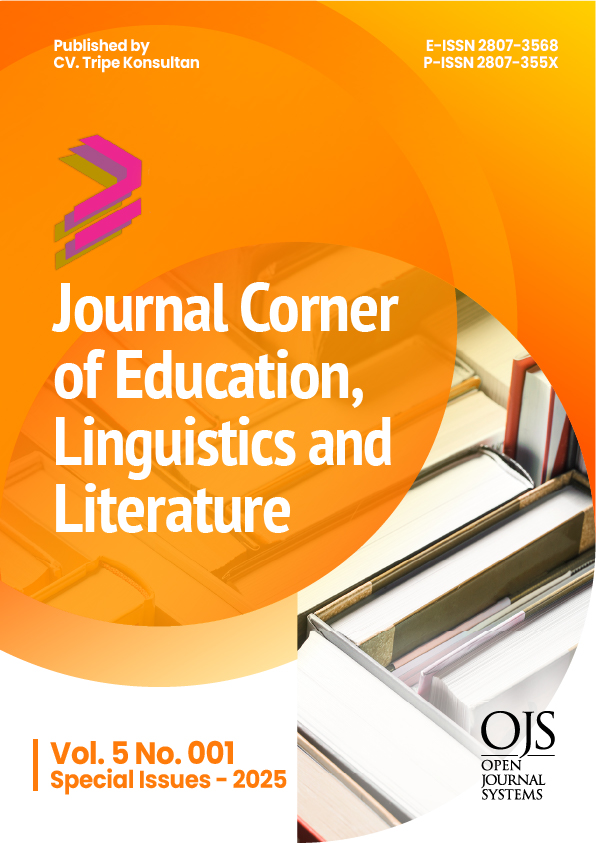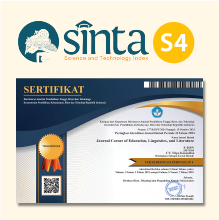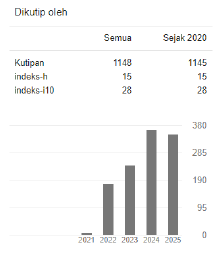Naming of Islands and Mountains in the Sangihe Talaud Islands Region: A Toponymy Study
 https://doi.org/10.54012/jcell.v5i001.583
https://doi.org/10.54012/jcell.v5i001.583
 Abstract views: 134
Abstract views: 134
 PDF downloads: 146
PDF downloads: 146
Keywords:
Toponymy, Etymology, Endonym, ExonymAbstract
This research focused on the toponymy study, etymology, endonym and exonym which are related to the names of island and mountain in Sangihe Talaud archipelagos. This research is descriptive research. The data were collected from library research and field research in Sangihe island. The result of this research would be described as follow: the toponymy etymology study derived from folklore, legend, and history. Sangihe island has endonym such as sangihe and tampungan lawo. Besides, Sangihe island has variative exonym such as zanger,sanger, sangir, sanguin, sangil, and sangi. Talaud island has endonym such as talroda,and taloda and the exonym of this island such as paradise, talaud and porodisa. Siau island has endonym such as siawu, and karangetang and the exonym of Siau island is sio,siau siouw, siauw, chiaoa, shao, and siaw. Tagulandang island has endonym such as mandolrokang and tagulrandang and the exonym of this island is mandolokang, tagulandang, pagincar and pancare. Biaro island has endonym such as biaro and kolro-kolro and the exonym of this is Biaro and kolo-kolo. Furthermore, the researcher found that Awu mount has endonym such awu, manakanusa and aditinggi. Karangetang mount has endonym such as karangetang, simeno-meno makiseba and aditinggi and its exonym is yohanes tamanggaholo and api Siau. Whereas Tamata Mount only has one endonym its called tamata and has one exonym such as Yohana mount. Ruang mount has endonym such ruang and aditinggi, and its exonym is duang.
Downloads
References
Berstein, B. (1964). Elaborated and restricted codes: Their social origins and some consequences. American Anthropologist, 66(6), 55–69.
Duranti, A. (1997). Linguistic anthropology. Cambridge University Press.
Halliday, M. A. K. (1985). An introduction to functional grammar. London: Edward Arnold.
Tent, J., & Slatyer, H. (2009). Naming places on the ‘Southland’: European place naming practices from 1606 to 1803. Australian Historical Studies, 40(1), 5–31. https://doi.org/10.1080/10314610802662912
KBBI. (1999). Kamus Besar Bahasa Indonesia (3rd ed.). Jakarta: Balai Pustaka, Departemen Pendidikan dan Kebudayaan.
Fraenkel, J. R., Wallen, N. E., & Hyun, H. H. (1993). How to design and evaluate research in education. New York: McGraw-Hill.
Meyer, C. (2009). Introduction to English linguistics. Cambridge University Press.
United Nations. (2006). Manual for the national standardization of geographical names: United Nations Group of Experts on Geographical Names. New York: United Nations Publications.
Rais, J. (1992). Country report – Indonesia. In 6th Meeting of the UNGEGN for Asia South–East and Pacific South–West Division. Wellington.
Kridalaksana, H. (1993). Kamus linguistik (3rd ed.). Jakarta: PT Gramedia Pustaka Utama.
Parera, J. D. (1987). Dasar-dasar analisis semantik. Jakarta: Erlangga.
Parera, J. D. (2004). Semantic theory. Jakarta: Erlangga.
Downloads
Published
How to Cite
Issue
Section
License
Copyright (c) 2025 Herol H Pareda, Emelia J.C Panambunan

This work is licensed under a Creative Commons Attribution-ShareAlike 4.0 International License.
All articles published in the Journal Corner of Education, Linguistics, and Literature are licensed under the Creative Commons Attribution-ShareAlike License (CC BY-SA).

















